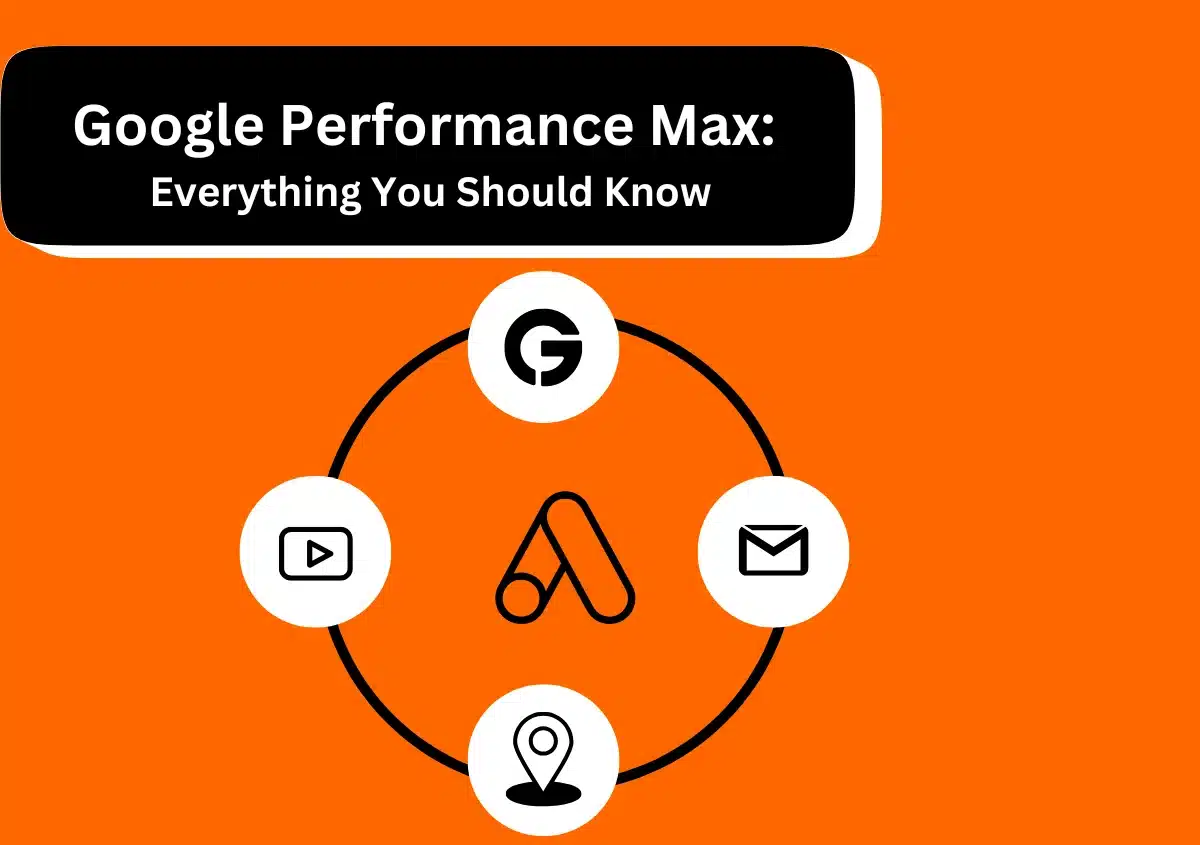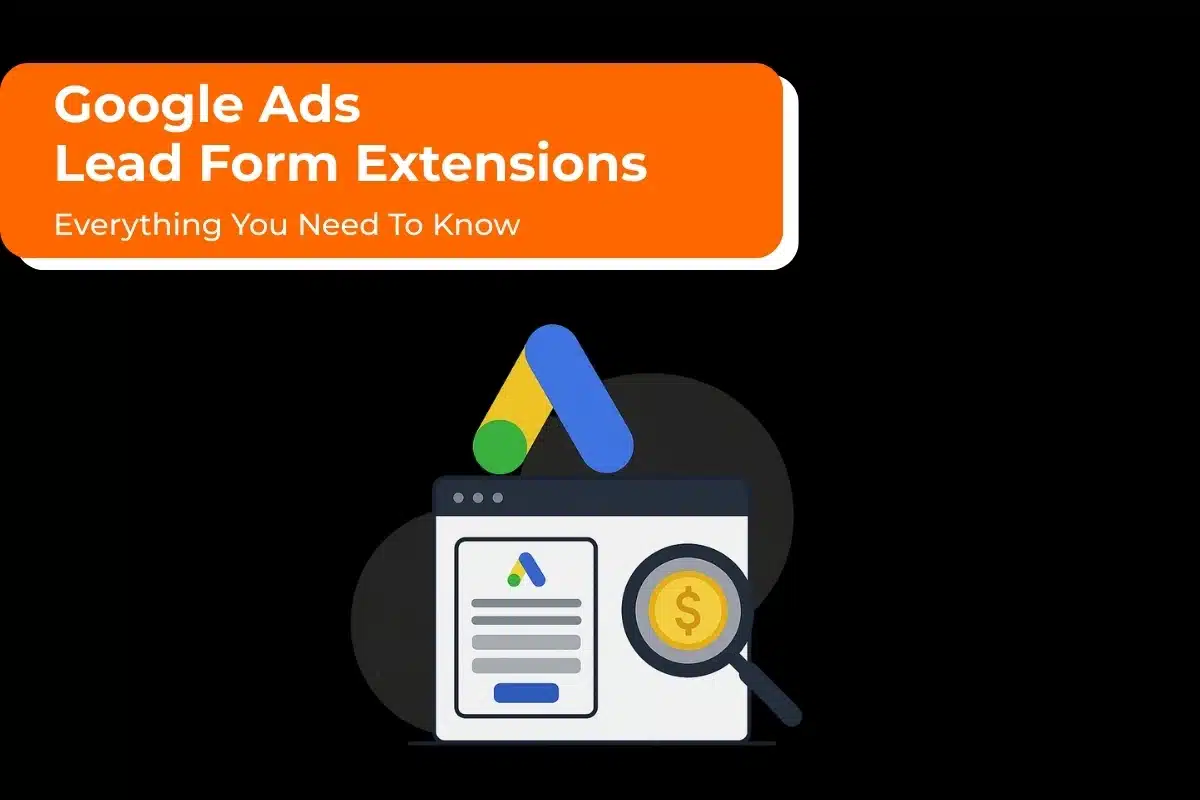Ever since its launch, Google Performance Max has been transforming how businesses reach customers across digital platforms.
Let’s imagine you’re a business owner launching a new line of electronics. Your audience is scattered across multiple digital spaces. While some love YouTube, others spend time on social media, and many still rely on Google Search.
You’ve tried managing separate campaigns for each platform, but it’s overwhelming and takes too much time.
Then, you hear about Google Performance Max campaigns—a campaign type designed to empower your efforts and reach your audience across all of Google’s platforms.
So, you launch your first Performance Max campaign. Soon, you notice the difference: one campaign, optimized by Google’s AI, targets the right people at the right moments across YouTube, Gmail, Search, and beyond.
Incredible, right?
Today, we’ll explore everything you need to know about Google Performance Max to simplify your ad strategy, improve reach, and grow your business in 2025.
What is Google Performance Max?
Performance Max Campaigns (often called PMax campaigns) are Google’s latest solution to merge digital advertising across Search, Display, YouTube, and Gmail—all within a single campaign.
It is an automated, goal-driven ad campaign type within the Google Ads suite. By combining multiple channels into one campaign, Performance Max helps advertisers achieve specific objectives such as:
- Increased conversions
- Brand awareness
- Better reach
Powered by advanced AI, Performance Max optimizes ads to reach the right audience across Google’s platforms. It also targets users when they’re most likely to engage.
How are PMax Campaigns Different from Other Campaign Types?
Unlike standalone campaigns like Search or Display, Performance Max ads integrate all of Google’s properties into one.
This means your ads can reach users across various channels simultaneously. In simpler terms, one cohesive strategy is all you need to reach your audiences everywhere.
How PMax Campaigns Can Help Businesses?
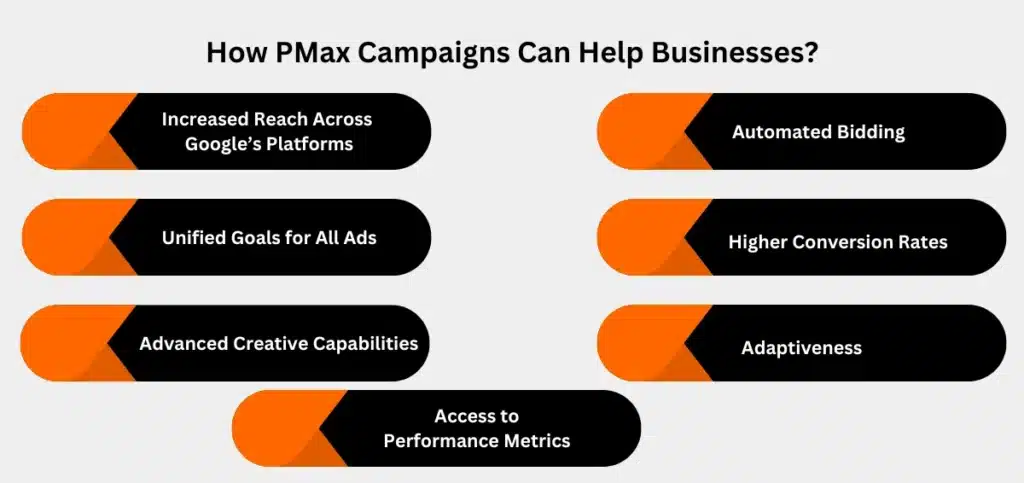
For businesses, staying competitive this year involves the smart use of tools that adapt to user behavior in real-time.
Using Google Performance Max in 2025 comes with several unique advantages:
1. Increased Reach Across Google’s Platforms
Performance Max goes beyond the limitations of single-channel campaigns and enables businesses to reach a broader audience across Google’s network.
2. Unified Goals for All Ads
Managing one campaign for multiple platforms simplifies tracking and aligns goals across channels. Additionally, Performance Max provides unified reporting, to reduce manual work and offer comprehensive insights.
3. Advanced Creative Capabilities
Performance Max automatically tests combinations of various ad formats to find the most effective configurations. This feature ensures that ads perform well across all channels.
4. Automated Bidding
Google’s automated bidding optimizes for the best time, user, and placement. As a result, businesses are free to focus on broader marketing goals while Google handles the technical details.
5. Higher Conversion Rates
Intent-based targeting in Pmax campaigns helps improve conversions by reaching users who are ready to engage.
6. Adaptiveness
Performance Max has machine learning at its core. This continuously adapts to user behavior, seasonal trends, and market changes.
7. Access to Performance Metrics
With advanced reporting tools, Performance Max provides data on ad performance across platforms. Businesses find this great to make informed decisions.
Ready for Google’s latest AI-powered ad technology? Partner with our Google Ads management services to stay ahead in 2025.
How Google Performance Max Works?
Performance Max campaigns use advanced machine learning to automate almost every aspect of your campaign. Here’s a look at how it works:
Automated Audience Targeting and Bidding
Performance Max begins with automatically identifying your ideal audience. It then sets bids based on who is likely to convert.
This way, it is easier to reach relevant customers across all of Google’s platforms without manually managing multiple campaigns.
Location, Language, and Ad Scheduling
Thanks to the support of Google Ads Editor, Performance Max allows you to:
- Target specific locations
- Set language preferences
- Schedule ads
This flexibility ensures your ads appear where and when your audience is most active.
Automatically Created Assets
Google can generate ad assets based on your website, domain, and existing ads.
This automation feature keeps your campaign relevant and up-to-date, with new text assets customized to your target audience.
Asset Groups
In Performance Max, asset groups refer to collections of ad elements—images, logos, videos, headlines, and more.
These assets combine to create different formats and enable you to display customized content across Google’s platforms. Additional assets like promotions, prices, callouts, and structured snippets help enhance your ad visibility.
Our PPC agency has the expertise to set up and maintain successful Pmax campaigns. Try us today to give your ad campaigns an edge over competitors.
Read Also: Google Ads for Financial Advisors
Performance Max vs. Google Search vs. Demand Gen Ads: Why Performance Max Wins?
Google Search Ads focus on user intent. They rely on specific search queries to deliver results and reach users actively searching for information or products.
Demand Gen Ads, on the other hand, target discovery-based placements across social media platforms like YouTube and the Google Discovery feed. They focus on creating interest in services or products.
Performance Max effectively blends these two approaches to create a more expansive ad campaign. By unifying ads across Google’s entire inventory—including Search, YouTube, Display, Gmail, and Maps—PMax reaches users across multiple channels simultaneously.
This unique cross-channel flexibility, powered by Google’s AI, maximizes visibility and reach without requiring separate campaigns.
For businesses seeking efficient advertising with a wide reach and optimized conversions, Performance Max stands out as the superior choice.
Its ability to target users across all Google properties in one campaign saves time and increases ROI.
Ready to make the switch? Let our Google Ads specialist bring you the power of Performance Max!
10 Steps to Set Up a Performance Max Campaign
Setting up your Google Performance Max Campaign is easier than you expect. Here’s how to go about it:
- Define Campaign Objectives and Budget: Start by aligning your campaign goals with business objectives, such as sales leads, website traffic, or local store visits.
- Select Conversion Goals: Decide on the most important conversion goals to keep your campaign focused and maximize results.
- Choose a Campaign Type and Name: Specify your campaign type and assign a clear, descriptive name.
- Set Up Bidding: Remember that Performance Max only allows automated bidding. Select a strategy— such as maximizing conversions—that aligns with your goals.
- Set Up Location and Languages: Target specific locations and set language preferences to align with your audience.
- Adjust Campaign Settings: Customize your text assets and make the final URL relevant.
- Manage Asset Groups: The basics for Performance Max include:
- 3-5 headlines
- Long headlines
- Description texts
- Square and landscape images
- A logo
- Short YouTube videos (up to 10 seconds)
- Set Up Budget: Define a daily or total budget to control ad spending.
- Review Setup: Double-check that all settings sync with campaign objectives.
- Publish: Launch your campaign.
Get in touch with our team to set up your Pmax campaign.
10 Tips to Power Up Your Performance Max Campaigns
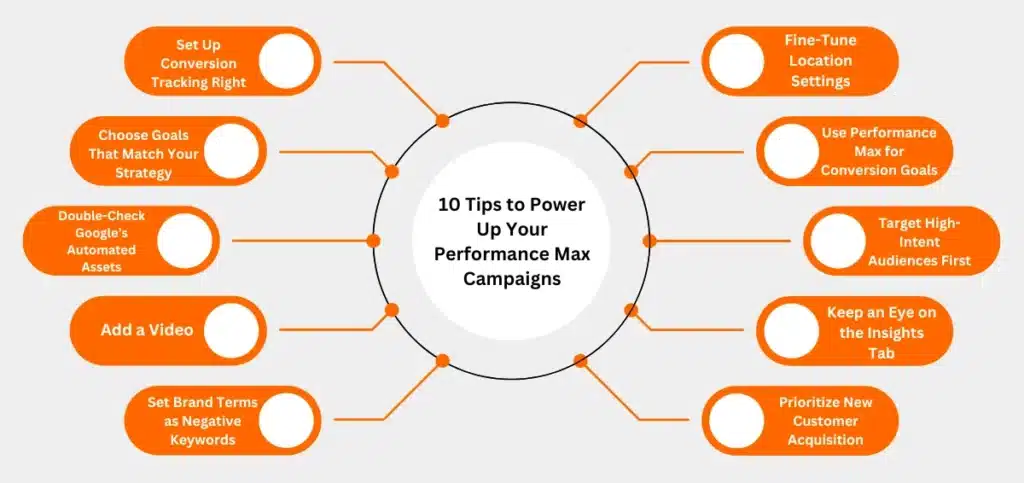
Ready to make the most of Google’s Performance Max? These pro tips will give your campaigns the boost they need!
1. Set Up Conversion Tracking Right
Tracking each step of the customer journey lets you know which parts drive action. Google’s conversion tools help you follow user behavior, from the first click to the final sale.
2. Choose Goals That Match Your Strategy
Be sure your campaign goals—whether it’s more conversions or boosting brand awareness—line up with your business priorities. This will make your ad spend work harder for you.
3. Double-Check Google’s Automated Assets
Google can generate text and images for you, which is handy, but it’s a good idea to review them regularly. This keeps things consistent with your brand and prevents any off-brand content.
4. Add a Video
Short videos are super effective for grabbing attention. Platforms like YouTube love them, and they often boost conversions!
5. Set Brand Terms as Negative Keywords
To keep your ads from competing with your organic search results, add brand terms as negative keywords. This way, your budget focuses on finding new customers, not just the ones who already know you.
6. Fine-Tune Location Settings
Don’t let your ads wander! Adjust your location settings to target your audience precisely and avoid regions that aren’t relevant to your business.
7. Use Performance Max for Conversion Goals
Performance Max shines brightest when you’re aiming for conversions like sales or lead generation. If your goal is simply brand awareness, other campaign types might fit better.
8. Target High-Intent Audiences First
In the early days of your campaign, choose audience signals that show high intent. This helps you reach people who are more likely to take action, making your campaign more efficient.
9. Keep an Eye on the Insights Tab
The Insights tab is packed with valuable data on how assets and audiences are performing. Use these insights to tweak your campaign and make it stronger.
10. Prioritize New Customer Acquisition
With Google’s settings, you can focus on bringing in fresh customers over returning ones. It’s a great way to expand your reach!
Read Also:- How to Install Google Ads Script to Pmax?
Common Hurdles and How to Tackle Them?
Here are a few common stumbling blocks with Performance Max—and how to get around them:
1. Limited Budget
A tight budget can hold your campaign back. To get the best results, try to set a budget that matches your goals and audience size. This way, Google can gather enough data to optimize your performance.
2. Strict Bid Strategies
Strict bid limits can restrict your reach. Opt for flexible strategies like Target CPA or Target ROAS to keep things balanced and adaptable.
3. Too Narrow Targeting
Being too specific can limit your campaign’s reach. Broaden your targeting a bit to catch audiences who might be interested but don’t fit the exact criteria.
4. Site Crawl Issues
Google needs to be able to crawl your site for maximum ad relevance. Make sure your robots.txt file allows crawling to avoid any hiccups.
2025 Trends in Google Performance Max
This year is set to be exciting for Performance Max with some cool innovations:
- AI-Driven Ad Placements: Google’s AI keeps improving, helping you reach the right people at the right time. Let the automation work for you by identifying who’s ready to engage!
- Better Transparency: New transparency tools show you where your ads appear and how they’re performing, so you can fine-tune your targeting.
- Creative Flexibility: Google’s creative tools now offer even more ways to adapt your brand visuals and messaging, keeping everything consistent.
- Engaging Visuals: With more focus on images and videos, ads are becoming more visually captivating—perfect for grabbing attention.
- Real-Time Customization: Real-time insights mean you can quickly respond to trends, making adjustments on the fly.
How to Measure Your Performance Max Success?
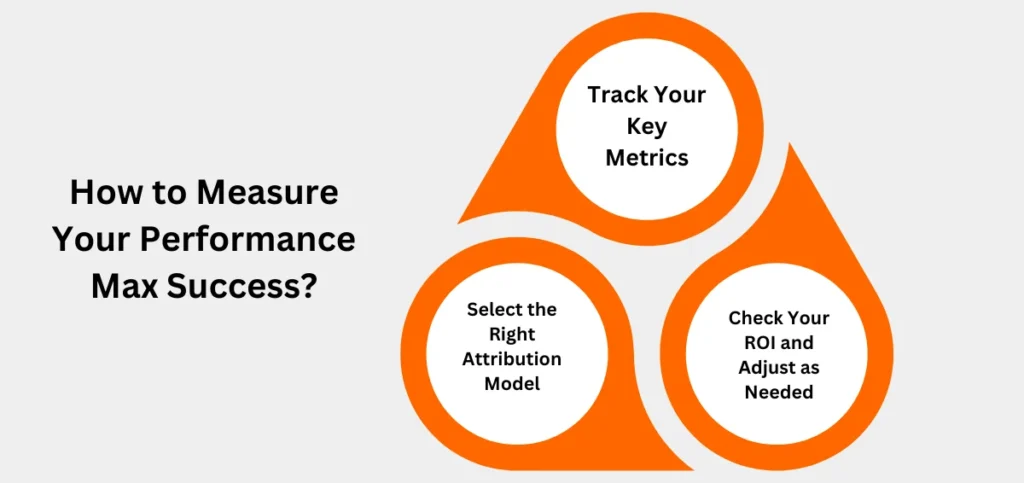
Evaluating your campaign’s success is all about keeping an eye on a few key things:
1. Track Your Key Metrics
Focus on conversion rates, CPA (cost per action), and ROAS (return on ad spend). These give you a clear picture of how your ads resonate with your audience.
2. Select the Right Attribution Model
Whether it’s first-click, last-click, or data-driven, each model offers different insights. Choose the one that helps you understand your customer’s journey best.
3. Check Your ROI and Adjust as Needed
Regularly review your return on investment. Look at ROAS to gauge profitability, and tweak campaign goals or bids to make the most of new data insights.
Is Performance Max Right for Your Business?
Performance Max could be perfect if your goal is to reach a wide audience across multiple Google channels.
- Best For: Broad reach, high conversion goals, and simplifying ad management.
- Not Ideal For: Single-channel focus or when you need very precise control over placements.
Get Ready to Make an Impact
In 2025, Performance Max will be stronger than ever with its cross-channel reach and smart automation.
If you’re eager to see your results soar, let our Google Ads expert help you launch a Performance Max campaign tailored to your goals. Let’s make every ad dollar count!

